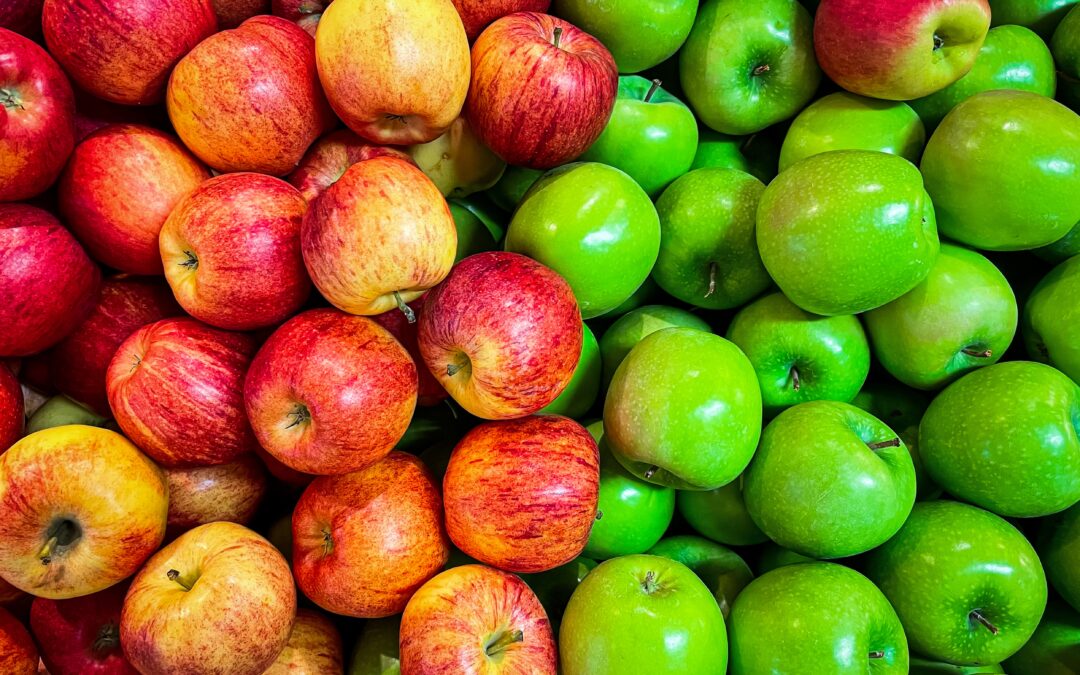Apples are one of the most popular fruits in the world, and for good reason. They are versatile, delicious, and packed with nutrients. In this comprehensive guide, we will take a look at everything you need to know about apples, including their history, health benefits, and various types.
History of Apples
Apples have been around for thousands of years and have a rich history. The apple tree is believed to have originated in Central Asia, where it has been cultivated for over 4,000 years. The ancient Greeks, Romans, and Egyptians all grew apples and considered them to be a symbol of love, health, and immortality.
In the Middle Ages, apples were used to make cider, which was a popular drink among all classes. The apple then spread to Europe and eventually made its way to the Americas with the help of colonists. Today, apples are grown all over the world, with China being the largest producer.
Types of Apples
There are over 7,500 varieties of apples grown worldwide, each with its own unique flavor, texture, and color. Some of the most popular types of apples include:
- Red Delicious: This is the most widely grown apple in the United States and is known for its sweet taste and bright red skin.
- Granny Smith: This apple is known for its tart flavor and green skin. It is often used in pies and other baked goods.
- Gala: This apple is known for its sweet taste and is often used in salads and as a snack.
- Fuji: This apple is known for its sweet and crisp flavor and is often used in pies and other baked goods.
- Honeycrisp: This apple is known for its sweet and crispy flavor and is often used in salads and as a snack.
Health Benefits of Apples
Apples are not only delicious, but they also have many health benefits. They are packed with vitamins and minerals and are a good source of fiber. Some of the health benefits of apples include:
- Weight loss: Apples are low in calories and high in fiber, making them a great snack for weight loss.
- Lowering cholesterol: Apples contain pectin, a type of soluble fiber that can help lower cholesterol levels.
- Reducing risk of heart disease: The antioxidants in apples, such as quercetin, can help reduce the risk of heart disease.
- Reducing risk of cancer: Apples contain phytochemicals that can help reduce the risk of certain types of cancer.
- Improving brain health: Apples contain antioxidants that can help improve brain function and protect against neurodegenerative diseases.
How to Select and Store Apples
When selecting apples, look for ones that are firm and free of bruises or soft spots. Avoid apples that have wrinkled skin or are starting to turn brown. Apples should be stored in a cool, dry place, such as the refrigerator, to keep them fresh for longer.
How to Use Apples in Cooking
Apples are a versatile fruit that can be used in a variety of dishes. They can be eaten raw, cooked, or baked. Some popular ways to use apples in cooking include:
- Making apple sauce: Apples can be peeled, cored, and cooked down to make a delicious and healthy sauce.
- Making apple pies: Apples are a classic ingredient in pies and can be used to make both sweet and savory pies.
- Making apple juice: Apples can be pressed to make a sweet and refreshing juice.
- Adding apples to salads: Apples can add a sweet and crunchy texture to salads, making them a delicious and healthy addition to any meal.
- Making apple crisp: Apples can be sliced and topped with a mixture of butter, sugar, and flour to make a delicious and easy dessert.
- Adding apples to smoothies: Apples can be blended with other fruits and yogurt to make a delicious and healthy smoothie.
- Adding apples to meat dishes: Apples can be thinly sliced and added to meat dishes such as pork chops or sausage for a sweet and savory taste.
Conclusion
Apples are a delicious and nutritious fruit that have been enjoyed for thousands of years. They are packed with vitamins and minerals, and have many health benefits. With so many varieties to choose from, there is an apple for everyone. Apples can be enjoyed raw, cooked, or baked and are a versatile ingredient in many dishes. So next time you’re at the grocery store, be sure to pick up some apples and incorporate them into your diet!
References:
- Smith-Spangler, C., Brandeau, M. L., Hunter, G. E., Bavinger, J. C., Pearson, M., Eschbach, P. J., . . . Olkin, I. (2012). Are organic foods safer or healthier than conventional alternatives?: A systematic review. Annals of Internal Medicine, 157(5), 348-366.
- USDA National Nutrient Database for Standard Reference
- “The History of Apples.” The Old Farmer’s Almanac, Old Farmer’s Almanac, www.almanac.com/content/history-apples.
- “The Health Benefits of Apples.” Medical News Today, MediLexicon International, www.medicalnewstoday.com/articles/270609.
- Some research for this article compiled with the assistance of ChatGPT/OpenAI







